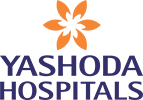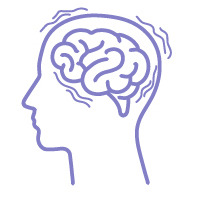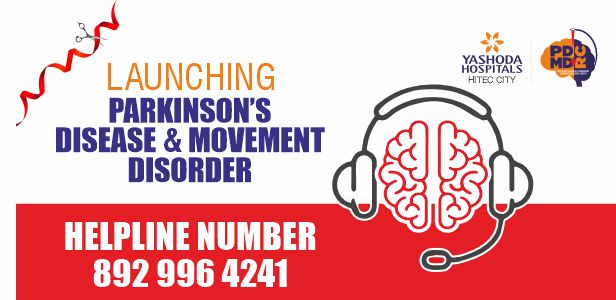Movement Disorders Treatment and Surgeries
Treatment for movement disorders including Parkinson’s disease, essential tremor, dystonia, Huntington’s disease, and ataxia, can significantly impact mobility and quality of life. Over the years, significant advancements in treatment have transformed how these conditions are managed. While there is no cure for most movement disorders, emerging therapies are improving symptom control, slowing disease progression, and enhancing patient mobility and independence.
Deep Brain Stimulation (DBS): DBS is an treatment option for advanced Parkinson’s disease patients. These are patients who still benefit from medication but experience troublesome OFF periods and dyskinesias impairing their occupational and social functioning. Drug resistant tremors and intolerance to medications are other indications. Good candidates also require strong social support. Patients with severe memory problems,, severe drug resistant depression, severe balance issues and falls may not be suitable candidates. DBS is an option in cases of Dystonia and Essential tremor for whom symptoms cannot be controlled with adequate medications and botulinum toxin therapy.
DBS surgery involves placing electrodes in specific areas of the brain.
It is done under stereotactic process with a frame fixed to head. Small holes are made in the skull and based on evaluation using MRI and CT. Patients are usually awake during surgery, thin electrodes are placed inside the brain to record signals and identify the target area. Intra-operative stimulation is performed to see the response on the table. Then electrodes are inserted into brain and under general anaesthesia connected to a pulse generator placed under the skin in the chest.
Infusion therapy for parkinson’s disease
Medication plays a crucial role in managing Parkinson’s disease (PD) symptoms, addressing the shortage of dopamine in the brain. Most medications are taken orally multiple times daily. Proper dosing of various medications are required. However, as PD progresses, patients may experience “wearing off,” where symptoms like tremor and slowness return between doses. Infusion therapies provide continuous drug delivery, reducing fluctuations in symptom control. Duodopa and apomorphine are common infusion therapy drugs, administered either through a small needle under the skin or a tube into the small intestine.
Botulinum Neurotoxin (BoNT) is a natural protein produced by the bacteria called clostridium botulinum. During treatment, BoNT is injected into a muscle or gland, where it blocks the connection between nerves and muscles or glands. This weakens the muscle or reduces saliva or sweating from the gland. BoNT injections usually take about two to seven days to start working and reach their full effect after about two weeks. Because the effect is temporary, injections need to be repeated every three to six months. Prof Rupam Borgohain has vast experience and has taught generations of neurologists in utilising Botulinum toxin.
Treatment for Ataxia includes eradicating the causative factors like vitamin deficiencies, exposure to certain drugs or toxins, autoimmune issues, metabolic diseases, neurodegenerative diseases, or genetic factors.
Treatment for Dystonia: Treatment options vary depending on the cause and severity of dystonia. If a specific cause is identified, targeted treatment may be recommended. Otherwise, medications such as anti-cholinergics, benzodiazepines, baclofen, or muscle relaxants may offer relief.
Treatment for Essential Tremors (ET): While there is no cure for ET, several treatment options can help alleviate tremors. Simple measures like using weighted utensils or wrist weights may provide some relief. Medications, such as beta-blockers or anti-seizure medications, are often prescribed, although effectiveness can vary between individuals and may require a trial-and-error approach.
FAQ’s
What are the treatment options for movement disorders?
Movement disorders can be treated with medications such as dopamine agonists, physical therapy exercises that improve mobility and balance, injections such as Botox to treat muscle spasms, and occupational therapy, which helps them accomplish their tasks. In severe cases, surgery such as deep brain stimulation is an option for those individuals.
How effective are medications for managing symptoms?
Although the use of medications helps in improving the symptoms in people with movement disorders, their effectiveness varies depending on the severity of the condition and the patient’s response, so future adjustments are necessary.
What surgeries are available for movement disorders?
Some common surgeries for movement disorders include deep brain stimulation, pallidotomy, and thallotomy (lesions are made in the brain to improve symptoms).
What is Deep Brain Stimulation (DBS)?
DBS is a surgical procedure that treats movement disorders by ensuring proper signaling through electrical stimulation generated by implanting electrodes in specific brain regions.
How does Botox help with movement disorders like dystonia?
Botox increases mobility by inhibiting acetylcholine, a neurotransmitter that causes muscle contraction, and alleviates the symptoms of involuntary movements and spasms.
How long do treatments take to show results?
Results can be observed in a few days, weeks, or months, depending on the treatment, including the use of drugs, injections, or surgery.
Is rehabilitation necessary after treatment?
As part of rehabilitation therapy, physical therapy, occupational therapy, and speech therapy are recommended for individuals with movement disorders after treatment. Patients who receive these treatments benefit from assistance with daily tasks, speech issues, and specific mobility-enhancing exercises.
Can alternative therapies like acupuncture help?
According to studies, acupuncture may be an alternative therapy because it reduces pain, promotes muscle relaxation, and improves symptoms of movement disorders
Can wearable devices assist with movement disorder symptoms?
Yes, using wearable technology helps people with movement disorders improve their condition by tracking and monitoring the disease’s progression or movement patterns.
Is gene therapy available for movement disorders?
There is still research being done on gene therapy for movement disorders, which, if successful, could be used to treat diseases like Parkinson’s and Huntington’s.







 Appointment
Appointment WhatsApp
WhatsApp Call
Call More
More